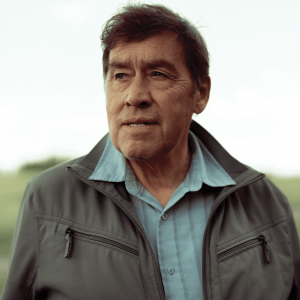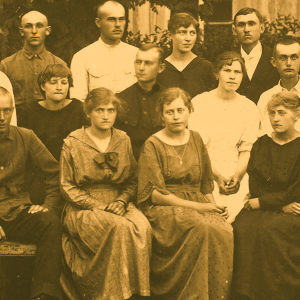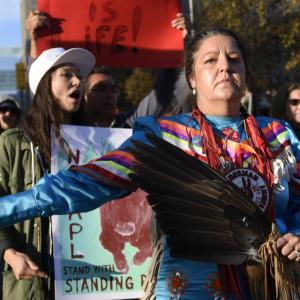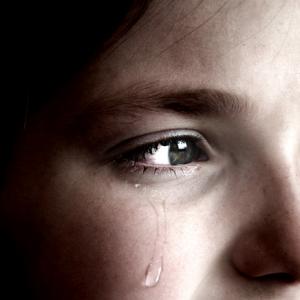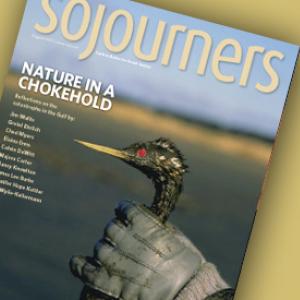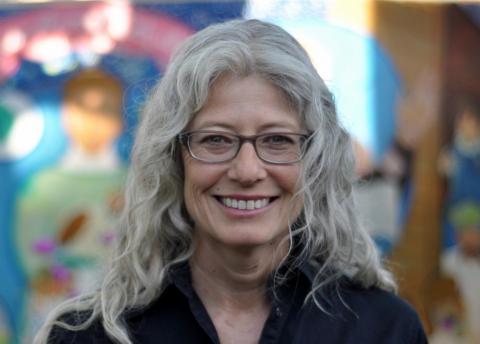
Elaine Enns is co-director of Bartimaeus Cooperative Ministries in Oak View, Calif., and co-author of Healing Haunted Histories: A Settler Discipleship of Decolonization.
Posts By This Author
‘The Catholic Church Needs to Change Its Thinking About Indigenous People’
An interview with Harry Lafond on how the church might be replanted in Cree culture and land.
IN APRIL, Pope Francis made a long-awaited apology to a Canadian delegation of Inuit, First Nations, and Métis leaders at the Vatican for the “deplorable” violations children suffered at Catholic-run Indian Residential Schools for more than a century. The pope committed to come to Canada in late July to make his confession personally to residential school survivors and their descendants for “the abuse and disrespect for your identity, your culture, and even your spiritual values.”
In this historic apology, Pope Francis stated, “Clearly, the content of the faith cannot be transmitted in a way contrary to the faith itself.”
This watershed moment comes 25 years after Harry Lafond—a Catholic and then-chief of the Muskeg Lake Cree Nation in Saskatchewan—raised issues of Indigenous faith and culture in a historic audience with Pope John Paul II during the Vatican’s 1997 Synod of the Americas. An educator and Catholic deacon, Lafond and his ancestors have a long history of building bridges between settler and Indigenous communities. J.B. Lafond, Harry’s great grandfather, was a spokesperson for Chief Keetoowayhow at the sixth of the 11 numbered treaties signed by First Nations with the Canadian Crown between 1871 and 1877. At the Treaty 6 table in 1876, J.B. Lafond negotiated with a British colonial government for relief from the flood of encroaching European settlers on the prairies. The parties were trying to avoid the violence waged against the Lakota, Dakota, and Cheyenne to their south. Though traditional Muskeg Lake Cree territory covered hundreds of square miles, Treaty 6 allotted a reserve of only 42 square miles.
Harry Lafond’s family has lived on the Treaty 6 reserve since then. He and eight of his 11 siblings attended nearby St. Michael’s (Duck Lake) Indian Residential School, run by the Roman Catholic Church.
In 1975, after marrying Germaine Laplante, a former Catholic sister of Métis (mixed European and Indigenous) heritage, Lafond worked as an educator and then served for a decade as chief at Muskeg Lake. Later, he directed the Office of the Treaty Commissioner of Saskatchewan, formed to bring Indigenous views of treaty covenants to the wider settler community. His tenure coincided with the years of Canada’s groundbreaking Truth and Reconciliation Commission (TRC).
In 2015, after six years of gathering testimony from across Canada, the TRC issued 94 calls to action to repair past and continuing damages wrought by the residential school system as an instrument of colonization. These included 10 calls directed toward churches, one of which demanded an apology from the pope on Canadian soil for abuses—which is being realized this summer, thanks to seeds planted by leaders such as Harry Lafond.
Today, Lafond continues to foster dialogue about what it means to be both Cree and Catholic. He works to renew Cree language and traditions among his people, while accompanying settlers interested in restorative solidarity. In May, the first federal study of Native American boarding schools in the U.S. identified more than 400 Indian Residential Schools and more than 50 associated burial sites. We interviewed Lafond in March and May 2022 by Zoom and email about his journey toward restorative justice and how the church might be replanted in Cree culture and land.—Elaine Enns and Ched Myers
Elaine Enns and Ched Myers: How did you feel when you heard Pope Francis’ apology in April to the First Nations delegation?
Harry Lafond: Pope Francis is an exceptional man with a very strong instinct to find the right path to the hearts of his visitors. I felt great hope and comfort that together we will find our way to wahkohtowin, Cree law for making relatives. And I recognize that it is an event that should have taken place 500 years ago.
How Do We Heal Family Histories Entangled With Colonization?
Christians of European descent must face the hard stories of their past.
A FEW YEARS AGO, Ched Myers and I discovered this graffiti in my old suburban neighborhood in Saskatoon, Saskatchewan, scrawled across a fence just a block from where I grew up:
“... as long as the sun shines,
as long as the waters flow downhill,
and as long as the grass grows green ...”
It is a venerable phrase from the Two Row Wampum of 1613, an agreement between the Five Nations of the Iroquois and representatives of the Dutch government in what is now upstate New York, which affirmed principles of Indigenous self-determination, rights, and jurisdiction. The phrase has been reiterated in most subsequent treaties between European settlers and Indigenous Peoples in Canada.
Sixty miles due north of my old neighborhood is Opwashemoe Chakatinaw (named Stoney Knoll by settlers), nestled between the North and South Saskatchewan Rivers. A spiritual center for the Young Chippewayans, it was part of Reserve 107, assigned to this Cree tribe in 1876 under Treaty 6.
Becoming Unsettled
A resurgence of Indigenous identity and activism invites repentance and response from the descendants of European settlers--including Christians.
A resurgence of Indigenous identity and activism invites repentance and response from the descendants of European settlers--including Christians.
A Shameful Legacy
Canadian churches repent for running Indian Residential Schools.
A TRADITIONAL whale-oil lamp is solemnly lit by an Inuit elder. After being brushed with cedar and smudged with sage, three commissioners take their seats. A survivor begins his testimony, haltingly narrating painful memories from 60 years ago. Soon tears begin to flow, and a support person carefully collects the tear-soaked tissues into a basket, to be added to the sacred fire that burns outside the hall. In this space, so filled with sorrow and rage, every ritual communicates respect, empathy, and determination, turning public halls into sanctuaries of healing.
For seven generations Indigenous Canadian children were taken from their homes and sent, most often by force, to Indian Residential Schools. Churches began operating these schools in the early 1860s, and by the 1890s the federal government had begun to make attendance mandatory as part of a policy of assimilation into Canadian society. In these schools children were forbidden to speak their native languages, forced to conform to European ways of life, and often abused emotionally, physically, and sexually. Though most residential schools were closed by the mid-1970s , the last was not shuttered until 1996.
As part of a 2007 legal settlement with survivors, the Truth and Reconciliation Commission of Canada (TRC) was created, with a five-year mandate to document the testimony of survivors, families, and communities affected by the residential school experience and to inform all Canadians about this tragic history. Launched in Winnipeg in June 2010, the TRC will include seven national and a number of regional hearings throughout the country. The hope is to “guide and inspire Aboriginal peoples and Canadians in a process of reconciliation and renewed relationships that are based on mutual understanding and respect.”
The Passion of the Gulf
The BP catastrophe invites us to take a hard look at ourselves. We invited eight writers to offer their reflections on images from the Gulf Coast disaster.
